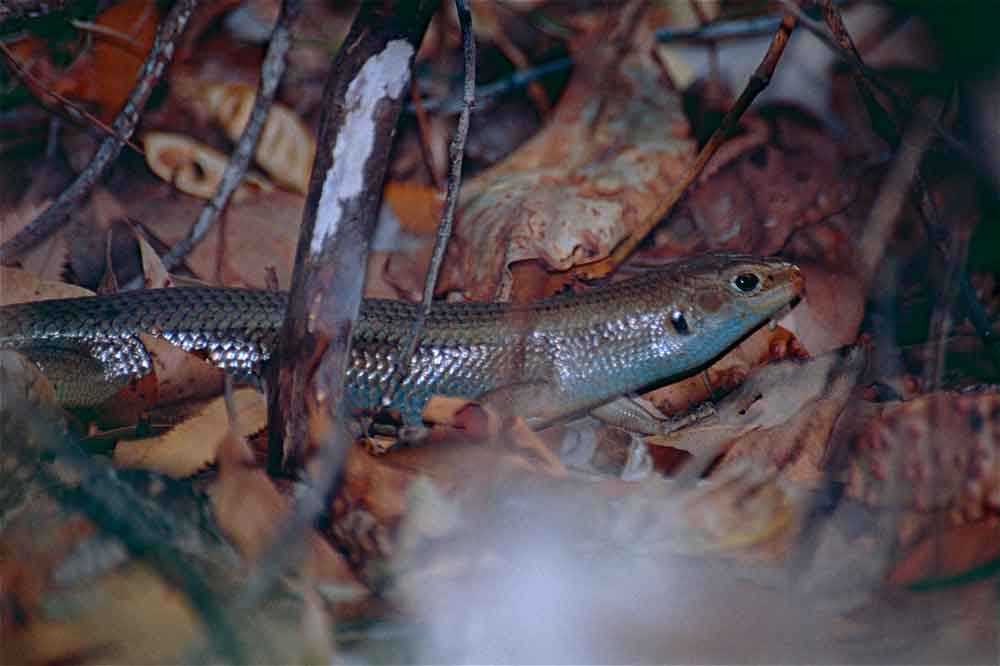The researchers note their study identified 25 individual instances of neurotoxin resistance in the skinks.
The Australian major skink (Bellatorias frerei) have evolved to resist snake venom by developing mutations in the muscle receptors that block venom from binding to the receptors, according to a study by the University of Queensland. The receptor is that area in the muscles that venom usually attacks by binding to it and block the nerve-muscle communication, which in turn leads to paralysis and death. The evolution has blocked the venom from shutting down the muscles of the skink.
“What we saw in skinks was evolution at its most ingenious,” Prof. Bryan Fry of the University of Queensland’s School of Environment said in a news release on the university website. “Australian skinks have evolved tiny changes in a critical muscle receptor, called the nicotinic acetylcholine receptor. This receptor is normally the target of neurotoxins which bind to it and block nerve-muscle communication causing rapid paralysis and death. But in a stunning example of a natural counterpunch, we found that on 25 occasions skinks independently developed mutations at that binding site to block venom from attaching. It’s a testament to the massive evolutionary pressure than venomous snakes exerted after their arrival and spread across the Australian continent, when they would have feasted on the defenceless lizards of the day. Incredibly, the same mutations evolved in other animals like mongooses which feed on cobras.”
According to the study, the mutations include a mechanism that adds sugar molecules to the receptor. It is these sugar molecules that help to physically block the toxins, along with a substitution of a protein building block.
The researchers note their study identified 25 individual instances of neurotoxin resistance in the skinks, and it evolved after the arrival of elapid snakes, including the inland Taipan snake to Australia.
The complete paper, “Make Acetylcholine Great Again! Australian Skinks Evolved Multiple Neurotoxin-Proof Nicotinic Acetylcholine Receptors in Defiance of Snake Venom” can read on the International Journal of Molecular Sciences website.
Australian Major Skink Information
The Australian major skink is native to parts of Australian and Australasia. It is found in Queensland, and New South Wales as well as Papua New Guinea. Its habitat includes forests, grasslands, rocky areas savannas and urban areas. It grows to about 3.7 inches in length and 5.5 inches including the tail. It is considered omnivorous and is a terrestrial, diurnal species.



